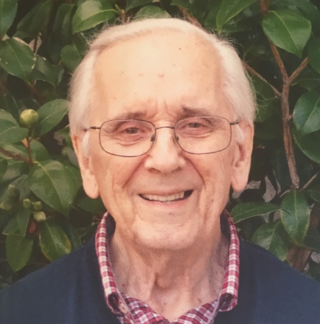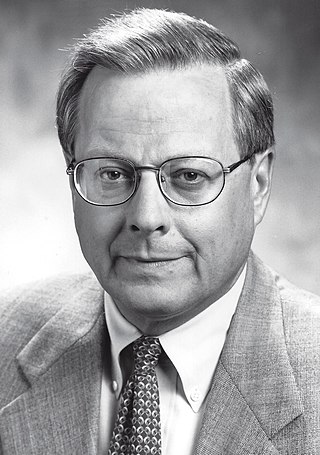Reynold B. Johnson was an American inventor and computer pioneer. A long-time employee of IBM, Johnson is said to be the "father" of the hard disk drive. Other inventions include automatic test scoring equipment and the videocassette tape.
Alan Field Shugart was an American engineer, entrepreneur and business executive whose career defined the modern computer disk drive industry.
David Hitz is an American engineer. In 1992, he, James Lau, and Michael Malcolm founded NetApp, where he became an executive vice president.
Mark Howard Kryder was Seagate Corp.'s senior vice president of research and chief technology officer. Kryder holds a Bachelor of Science degree in electrical engineering from Stanford University and a Ph.D. in electrical engineering and physics from the California Institute of Technology.

Michael George Luby is a mathematician and computer scientist, CEO of BitRipple, senior research scientist at the International Computer Science Institute (ICSI), former VP Technology at Qualcomm, co-founder and former chief technology officer of Digital Fountain. In coding theory he is known for leading the invention of the Tornado codes and the LT codes. In cryptography he is known for his contributions showing that any one-way function can be used as the basis for private cryptography, and for his analysis, in collaboration with Charles Rackoff, of the Feistel cipher construction. His distributed algorithm to find a maximal independent set in a computer network has also been influential.
The Harry H. Goode Memorial Award is an IEEE Computer Society annual awards in honor of Harry H. Goode for achievements in the information processing field which are considered either a single contribution of theory, design, or technique of outstanding significance, or the accumulation of important contributions on theory or practice over an extended time period, the total of which represent an outstanding contribution.
Dr. Alan Jay Smith is a computer scientist and researcher in the field of development and applications of caching strategies and the measurement and analysis of computer storage systems with many important contributions to the field. He currently is professor emeritus at the EECS faculty of the University of California, Berkeley.
The IEEE Reynold B. Johnson Data Storage Device Technology Award was a Technical Field Award of the IEEE that was established by the IEEE Board of Directors in 2004 and was discontinued in 2011. The award was presented annually from 2006–2010 for outstanding contributions to the advancement of information storage, with an emphasis on technical contributions in computer data storage device technology. The award was named to honor Reynold B. Johnson.
The IEEE Photonics Award is a Technical Field Award established by the IEEE Board of Directors in 2002. This award is presented for outstanding achievements in photonics, including work relating to: light-generation, transmission, deflection, amplification and detection and the optical/electro-optical componentry and instrumentation used to accomplish these functions. Also included are storage technologies utilizing photonics to read or write data and optical display technologies. It also extends from energy generation/propagation, communications, information processing, storage and display, biomedical and medical uses of light and measurement applications.
The Sidney Fernbach Award established in 1992 by the IEEE Computer Society, in memory of Sidney Fernbach, one of the pioneers in the development and application of high performance computers for the solution of large computational problems as the Division Chief for the Computation Division at Lawrence Livermore Laboratory from the late 1950s through the 1970s. A certificate and $2,000 are awarded for outstanding contributions in the application of high performance computers using innovative approaches. The nomination deadline is 1 July each year.
The Seymour Cray Computer Engineering Award, also known as the Seymour Cray Award, is an award given by the IEEE Computer Society, to recognize significant and innovative contributions in the field of high-performance computing. The award honors scientists who exhibit the creativity demonstrated by Seymour Cray, founder of Cray Research, Inc., and an early pioneer of supercomputing. Cray was an American electrical engineer and supercomputer architect who designed a series of computers that were the fastest in the world for decades, and founded Cray Research which built many of these machines. Called "the father of supercomputing," Cray has been credited with creating the supercomputer industry. He played a key role in the invention and design of the UNIVAC 1103, a landmark high-speed computer and the first computer available for commercial use.

Moshe Yanai is an Israeli electrical engineer. He is an inventor, businessman, entrepreneur, aviator, investor, and philanthropist. He led the development of the EMC Symmetrix, the flagship product of EMC Corporation in the 1990s, which prevented, to some extent, financial chaos in New York Stock Exchange and certain banks after the September 11 attacks, as further detailed below.
John Mason "Jack" Harker was an inventor, mechanical engineer, and product and program manager who pioneered development of disk storage systems. Starting as a member of the original team that developed the first disk storage system, he went on to develop IBM Direct Access Storage products for the next 35 years. Over that time, Harker was twice director of the IBM San Jose Storage Laboratories, an IBM Fellow, and an IEEE Fellow. He retired from IBM in 1987 and died in 2013.
Michael L. Kazar is an American engineer and technology executive.
Jaishankar Menon is an Indian-American computer scientist and researcher.

Charles Denis Mee was a British-American engineer, physicist, and author who was noted for his contributions in the areas of magnetic recording and data storage on hard disk drives (HDD). A large part of his career was with IBM in San Jose California. He is the author or editor of several books on magnetic recording.

Christopher Henry Bajorek is a data storage engineer noted for his leadership in developing and implementing magnetoresistive sensors into magnetic stripe readers, tape drives and hard disk drives.

Mason Lamar Williams III was an engineer and physicist, noted for his contributions in the areas of magnetic recording and data storage on hard disk drives (HDD). A large part of his career was with the IBM Almaden Research Center in San Jose, California. After retiring, Williams played a major role in the restoration and demonstration of the IBM RAMAC at the Computer History Museum in Mountain View, California

Neal Bertram is a physicist noted for his contributions to the theory of magnetic recording. From 1968 to 1985, he worked for Ampex Corporation in Redwood City. From 1985 to 2004, he was an Endowed Chair Professor at the Center for Memory and Recording Research (CMRR), University of California at San Diego. He is the author of the book "Theory of Magnetic Recording". He is an elected Fellow of the Institute of Electrical and Electronics Engineers. In 2003, he won the IEEE Reynold B. Johnson Information Storage Systems Award.





